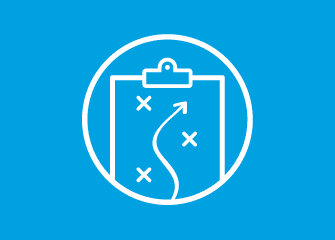5 things to look for with channel incentive program management in 2020
For channel marketing professionals looking to continue to build on their partner relationship momentum and maintain their competitive channel advantage, 2020 will usher in a number of new program approaches and technology changes:
CIPM technology ties to PRM will deepen. Channel marketing pros use both partner relationship management (PRM) and channel incentive program management (CIPM) technologies to enable and engender their channel partners: CIPM for incentive programs, PRM for content marketing, MDF, and training programs. PRM and CIPM ties – for example, Fielo’s Salesforce-native access to Lightning Platform objects representing partners’ behaviors – will continue to strengthen. For example, segmentation models used to target partner-enabling programs to specific partner segments will be able to be shared, e.g., channel marketing pros will be able to reuse CIPM segment definitions for PRM programs (and vice versa).
Spreadsheet-to-platform migration will accelerate. The number of companies that use spreadsheets is down – in 2019, 35% of companies still wrangled spreadsheets to manage their channel incentive programs. But that’s still a whopping big number, and a significant number of those companies’ channel marketing pros are planning to move off of spreadsheets to scale-proven commercial CIPM platform solutions in the next 1-2 years.
Machine learning will see the commercial light of day. Channel marketing pros have many questions regarding the design and management of their channel incentive programs – “How long should a program run for?” “Which types of programs are most effective for which partner segments?” “What reward value (budget) should I field to effect the highest ROI?” Sure, with enough time and data science-savvy, traditional analytics can answer these questions, and boost channel incentive program effectiveness. But machine learning (ML) technology applied to CIPM will enable that savvy and accelerate that time to greater effectiveness.
Manufacturing and Consumer Goods program thinking will track closer to Tech. For many years, the Tech industry has held the inside track on channel incentive program innovation, particularly with respect to applying the concepts of segmentation, behavioral incentivization, and multi-program management to incentive programs. But the innovation gap between Tech and other verticals is narrowing. As indicated in a research study conducted by Fielo in 2019, manufacturers and consumer goods companies are increasingly planning to employ advanced design thinking into their incentive program strategy.
More innovation. Yes, Manufacturing and Consumer Goods companies will make significant advances in their incentive program in 2020. But that doesn’t mean that Tech companies’ thinking will slow down. Expect more in the form of channel partner self-service empowerment, 2-tier incentive programs (e.g., involving distributors/ wholesalers and resellers/dealers), and advanced financial management (enabled per the aforementioned applications of ML).




